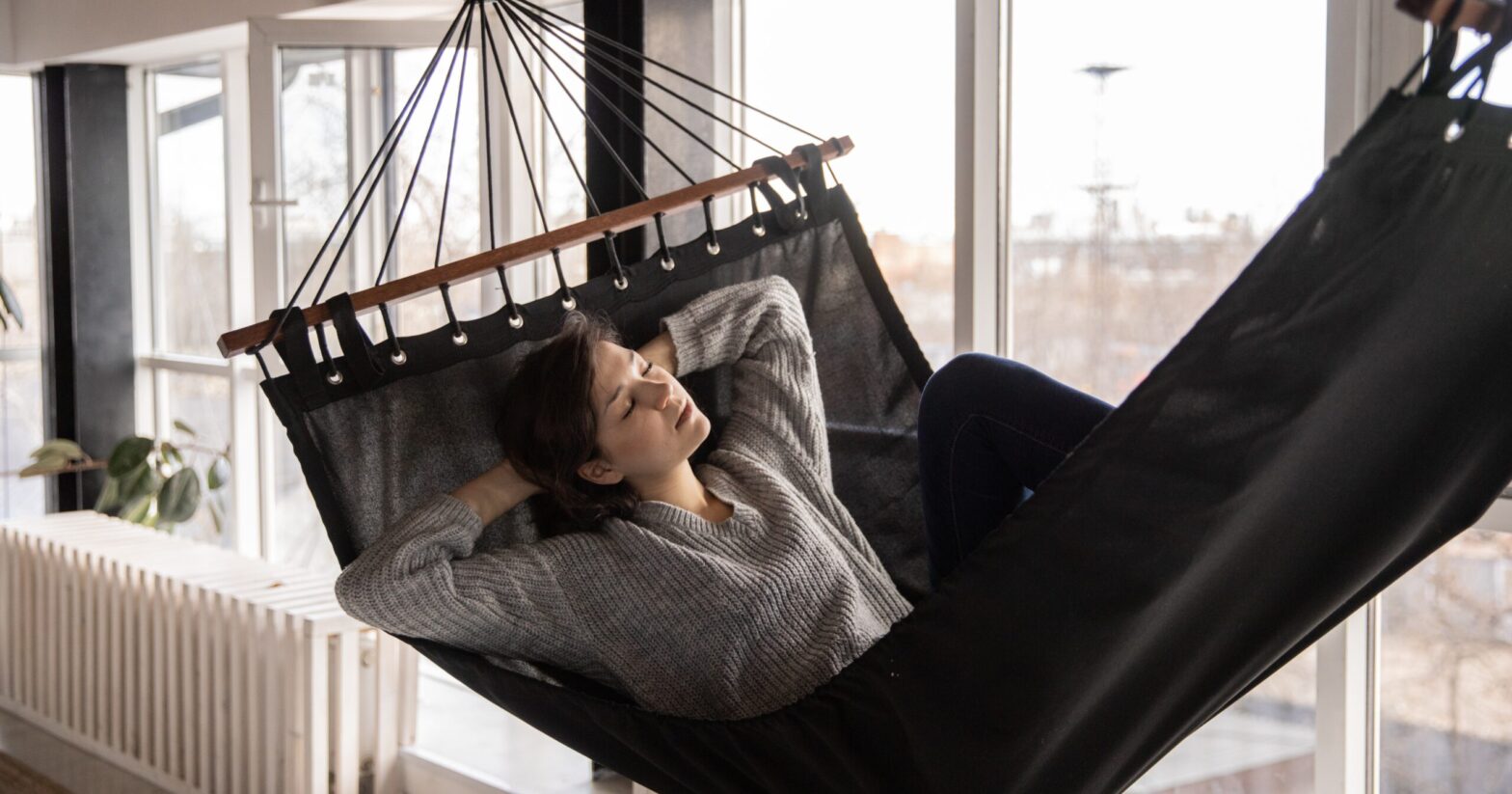There are many ways to sleep during indoor camping, from sleeping bags to mattresses. But why not try sleeping in a hammock?
There are many reasons to sleep in a hammock during indoor camping.
Some people are reminded of their hammock camping in the wild, and some just like the view, the swing and the ease of setting it up.
The ease of setting it up is also useful in the wilderness, as you can rest quickly after a long day of activities. At home, the hammock can also be easily removed to not take space when not in use.
You may also want to train yourself for real hammock camping outside. Getting used to sleeping in the hammock in the wild can be an uncomfortable experience, so it’s great to train yourself beforehand.
However, for some sleeping in a hammock can become uncomfortable after a few hours. If you get a hammock and decide you can’t sleep in it during indoor camping, you can still re-use it for activities like reading a book, relaxing and using it outside.
This will be the guide to getting a hammock for indoor camping and general home use. Hammocks for real camping outside are quite different, with more advanced features you don’t need at home.
Which hammock to get for indoor camping?
Hammock with a stand
The most recommended hammocks for indoor camping are hammocks with a stand. These hammocks come with a stand which you can assemble, and then suspend a hammock on it.
This is the example of a hammock with a stand.
You can also use them outside one day in your backyard. Get the stand that can also be disassembled so that type of hammock doesn’t take space when not in use.
When buying a hammock with a stand make sure to check the reviews on whether the stand is strong, durable and stable. You don’t want it to break underneath you or the stand to be unstable when turning in the hammock.
Also, pay attention to the canvas. It should be strong and durable, but still breathable and comfortable. It should be securely attached to the stand.
Check product specification for whether the hammock is long and large enough for your body, and whether the stand can support your weight. Also, make sure that the hammock can fit in your room.
Hammock that is hanging from the wall or ceiling
You can also install a hammock by hanging it with ropes or chains to the wall or ceiling. This process can easily go wrong because the hammock has to be hung the right way to support your weight and not break when lying in it. That’s why hammocks with a stand are preferable.
For hanging a hammock from the walls, you would first have to use durable, quality studs for which to tie a hammock for. They should be able to support a lot of weight. Also metal studs should never be put in a drywall but into the joust. Check more about hanging a hammock from the walls here or from the ceiling here.
Hammock for one person or two persons
Hammocks for home use have two types – hammocks for one person and hammocks for two people to lie in. Choose the one based on what you need the most and how much space you have for the hammock.
Hammock material cloth
Most common hammock materials are cotton, polyester and nylon.
Cotton is a great natural fabric. It’s very comfortable and molds to your body. It’s breathable so you won’t feel sweaty when lying in it for long periods of time during summer. It’s also very easy to wash. Cotton hammocks are the best choice for indoor camping and general indoor use. They are great for outdoor use, but only if you don’t plan to leave it outside when not in use. Cotton damages easily when exposed to harsh weather.
Polyester and nylon are better choices of material if you need a hammock for both indoor camping and outside use like leaving the hammock outside the whole time. Quality polyester can also be quick-drying, and comfortable just like cotton.
Advice for sleeping in a hammock
Avoid sleeping in a hammock for the first time before important events. Sleeping in a hammock can be uncomfortable for some. You might now get a good night’s sleep due to it being different from your usual sleeping place. You might fall out. You might get back or neck pain or stiffness in the muscles due to lack of space.
Some people who like to sleep on the side or on their stomach may find it weird having to sleep on their back in the hammock.
Some really tall people may find it hard to get a large enough hammock or have enough room space for it in order to be comfortable.
Use a comfortable pillow and wrap yourself in the blanket to prevent feeling cold.
If you lack space in the hammock, lie diagonally.
There are various types of hanging a hammock.They are usually suspended between two trees or posts. Or they can be self-suspended on the mounting hardware and stands.
Follow manufactured directions on hanging a hammock. Pay attention to the optimal distance between two posts.
Follow the instructions in how to mount a hammock itself if the hammock comes with its own mounting equipment.
If it feels uncomfortable for your knees to sleep in a hammock, put an additional pillow underneath your knees.
Don’t use a hammock that is more than 20 inches above the ground for safety reasons in case you fall out.





